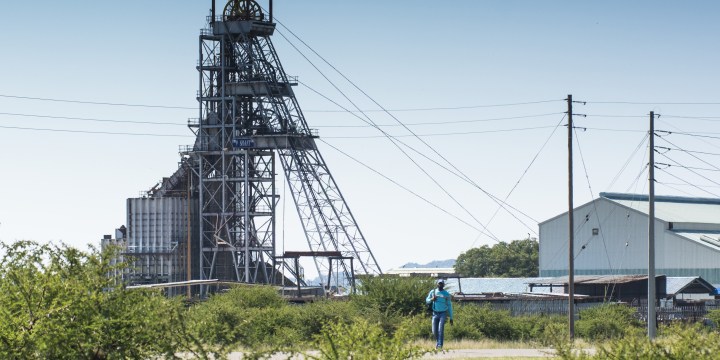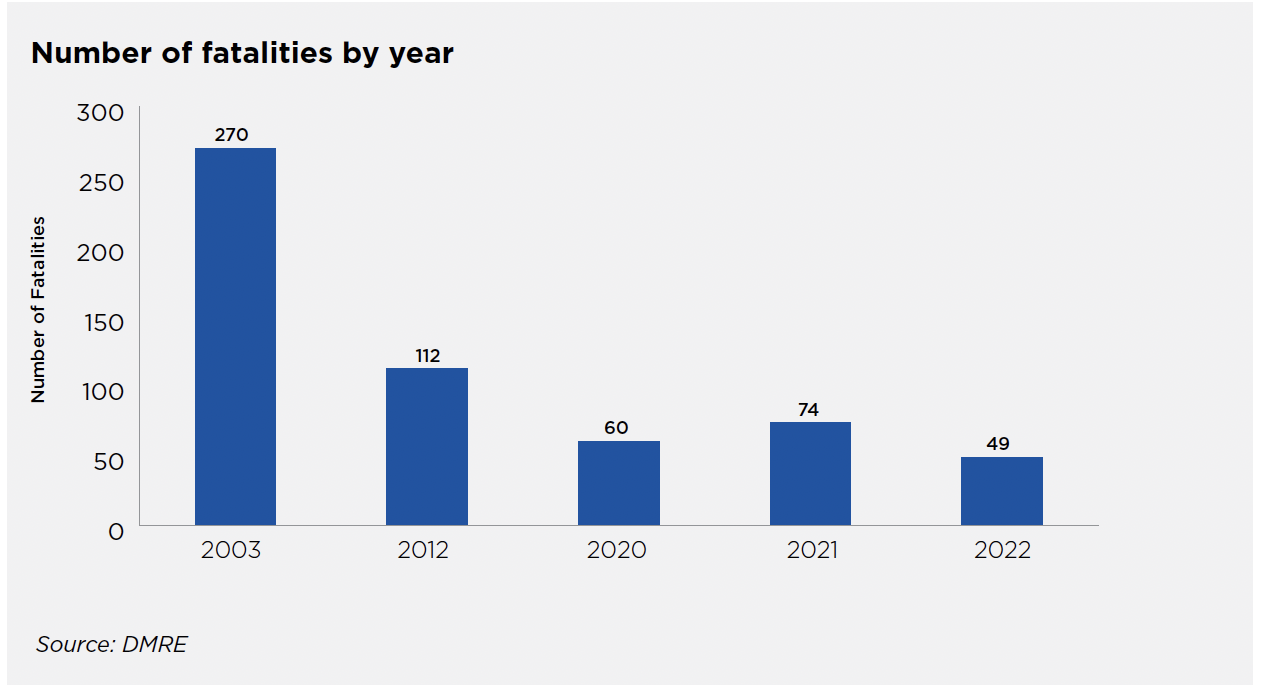NEWSFLASH
Implats says 11 miners killed, 75 in hospital after conveyance cage tragedy in Rustenburg

Eleven miners were killed and 75 admitted to hospital after an accident at Impala Platinum’s Rustenburg operations involving the conveyance cage that takes workers underground and back to the surface. This tragedy is a major setback to the mining sector’s vastly improved safety record.
Implats said the incident occurred just before 5pm on Monday when the conveyance cage was hoisting the miners to the surface after their shift.
“At 16:54, the conveyance unexpectedly started descending. Its rapid descent was stopped by the conveyance counterweight becoming trapped by the jack catches,” it said.
The miners were killed and injured when the cage’s plunge came to a sudden stop.
“This is the darkest day in the history of Implats,” CEO Nico Muller said. “We are deeply shocked and saddened by the loss of our colleagues and are in the process of ensuring all next of kin have been contacted.”
Investigations into the cause of the tragedy are under way and all mining activities at the Rustenburg facility have been halted.
The tragedy is a massive setback to the improving safety record of South Africa’s mining sector. Mining deaths in South Africa reached a record low of 49 in 2022. This figure was less than a fifth of the 2003 death toll of 270. In the 1980s as many as 800 miners were killed in a single year.

The accident occurred at the mine’s 11 shaft and is the company’s worst since 1974 when 13 of its employees were killed in an incident at a tailings dam, a company spokesman said.
Beyond the human tragedy, the disaster has struck during a tough time for Implats and other platinum group metals (PGM) producers, who are grappling with a collapse in prices for the precious metals.
Implats’ share price at midday on Tuesday was down over 7%, taking its decline in the year-to-date to over 63%.
Investors are increasingly concerned about safety – one of the key reasons for the strides on this front – and Implats’ overall safety record will now come into focus. Two years ago, three employees at its Rustenburg operations were killed during a mud rush. DM
This is a developing story and may continue to be updated.













 Become an Insider
Become an Insider
What a dangerous job.
Very very sad. My condolences to the families of the deceased and all injured mineworkers.
Amazing, the South African mining industry has more fatalities than the entire Oil&Gas exploration and production industry (as reported by IOGP, International Oil and Gas Producers, data from 50 companies in 95 countries for 2.7 million workhours, i.e. about 1.5 million people): 20-35 per year for 2017-date versus 50-74 for SA mining.
The root causes of process safety incidents are management either not having the correct processes in place or not ensuring people follow those processes, such as risk assessments to identify the multiple layers of critical equipment to prevent fatalities and then maintaining that critical equipment, plus competency management, etc.
In their defence maintaining a process safety management system does require the availability of sufficiently skilled people to perform the risk assessments, etc. Something that isn’t easy when the individuals are more worried about their safety and future than their day jobs.
How do you extrapolate “about 1.5 million people” from 2.7 million workhours? The SA mining industry employs around 475 000 people. If they all work the legally prescribed normal hours of 45 hours per week, that amounts to just short of 21.4 million manhours per week. Your math is a wee bit crooked, and you’re certainly not comparing apples with apples.
If you have a quick look at the DMRE’s weekly report published on 27/11/2023 (hours before the Implats accident) you’ll notice that 17 of this year’s 41 mining fatalities are classified under “GENERAL” and “MISCELLANEOUS”, with another 14 classified under “FALL OF GROUND”. I bet you won’t find as many management failures under those root causes as you are implying. The Implats incident produced the first fatalities this year under the “CONVEYANCE ACCIDENTS” classification, and although the early indications favour management failure as the root cause, this has not yet been officially established. My point is: let’s not blame management for everything that goes wrong; the industry and operating environment is just too complex to allow for such a simplification.
Either way – this accident is a very sad and unfortunate event. My condolences to all the families who lost loved ones, and my best wishes for speedy and full recoveries to those injured.
Any accidental loss of life is of course, terrible and inexcusable.. However, what will be even more sad is that the ANC tripartate alliance will try to make capital out of this with statements that this is the exploitation of black workers, and that this is the terrible price that the workers must pay for capitalist greed. Hence they will say that this justifies the nationalisation of mines. But this is just an excuse. Ultimately, according to their NDR, nationalisation will mean that the mines land up in the hands of a connected elite where they will have access to the trough, just as they do with SOEs . The result will be that, once looted, the mines will collapse from corruption, incompetence and mismanagement. Jobs will be lost and, en route to this, safety will go out the window and more will die. Look what happened to SA’s once world class thriving ferrochrome industry. Alternately what they have tried before is to revoke mining licenses, hoping that huge sums can be extorted for the return of the licenses or that the private owners will just walk away so that the mines can be sold for a song to the tripartite alliance who will then milk them for what they are worth without the slightest concern for the workers..
18 mineworkers dies underground of Shaft No 4 of Hartebeestfontein Gold Mine on 21st July 1997. Avgold Limited was owner of mine, conducted mining operations illegally. Deputy Minister Susan Shabangu visited the site and instituted inquiry against Avgold Limited, the death of 18 mineworkers never investigated. Avgold subsidiary of Anglovaal Limited belonged to Menell and Hershov family, now part of African Rainbow Minerals.
I’m assuming that your anger is focused on Susan Shabangu in her position as deputy minister, as it is her responsibility to have made sure that the investigation happened.
Do you perhaps know why it didn’t?
I am not angry but sad. I suggest to find Annual Reports of either Avgold Limited or Anglovaal Limited for the year 1997 if you find any mention of the death of 18 mineworkers, their names or any report from DMRE for the said inquiry or investigation. Hartebeestfontein Mine was acquired by AvgoldLimited on 17 October 1996 for R373.3 million from their shareholders. on 16th August 1999, Buffelsfontein Gold Mines Limited as subsidiary of DRDGold acquired Hartebeestfontein Mine for R45 million. the chairman of Buffelsfontein and DRDGold was Mr Roger Kebble and Avgold chairman was Mr Rick Menell. DMRE approved the transction despite the mine was under investigation as Avgold was conducting miing operations illegally which resulted death of 18 mine workers. As Minister Pravin Gordhan says “connect the dot”.
We can blame the current mob for almost everything, but realise that mining safety has IMPROVED since the years before the transition. Frightening thought. We know the expertise was there, so why was the deathrate so high? The implications of that question are pretty dismal – something like the Boeing decision to save a few million by not doing additional training/installing backup systems to their aircraft. The decision led directly to the death of 300+ people. Money first, people second?